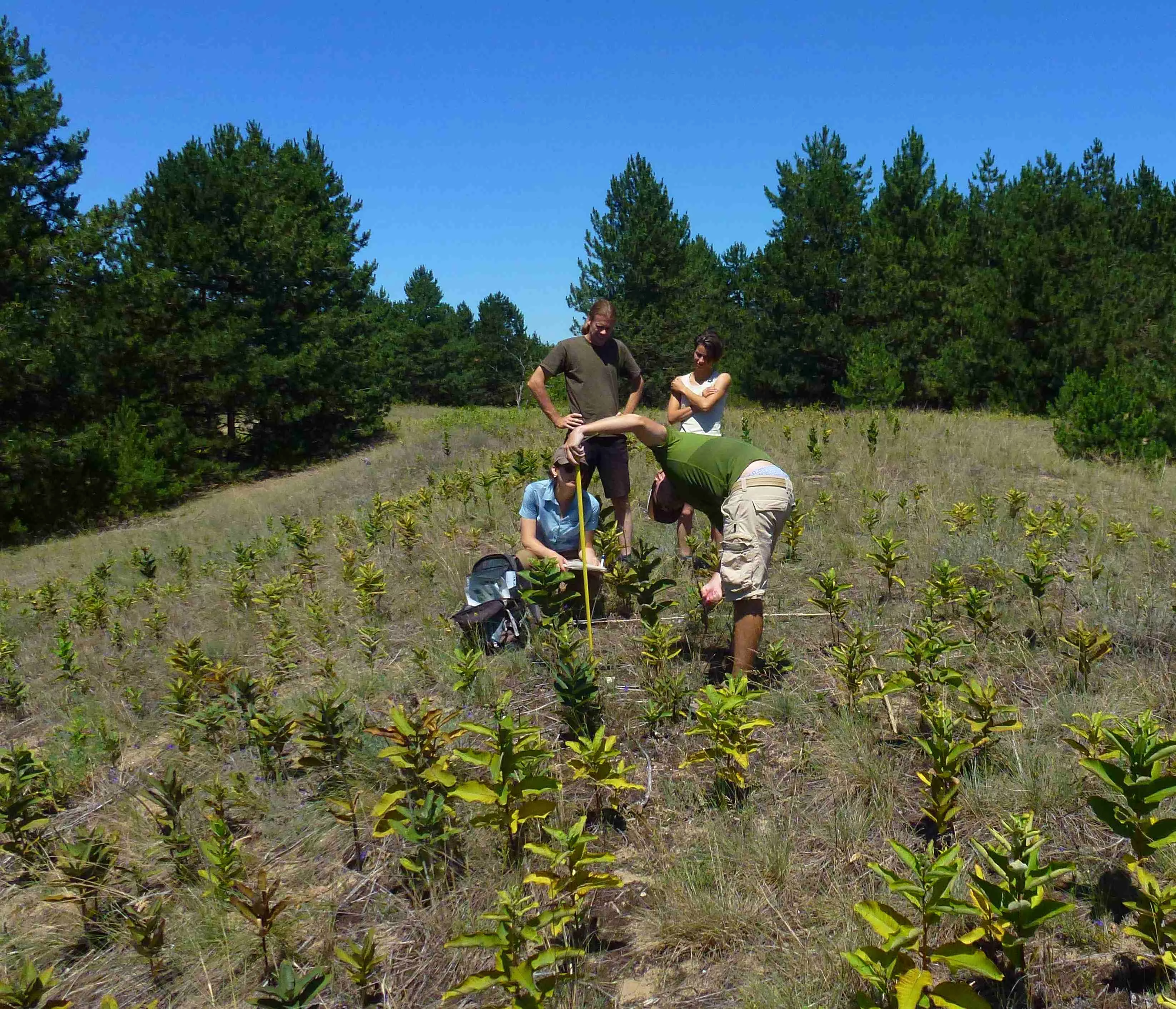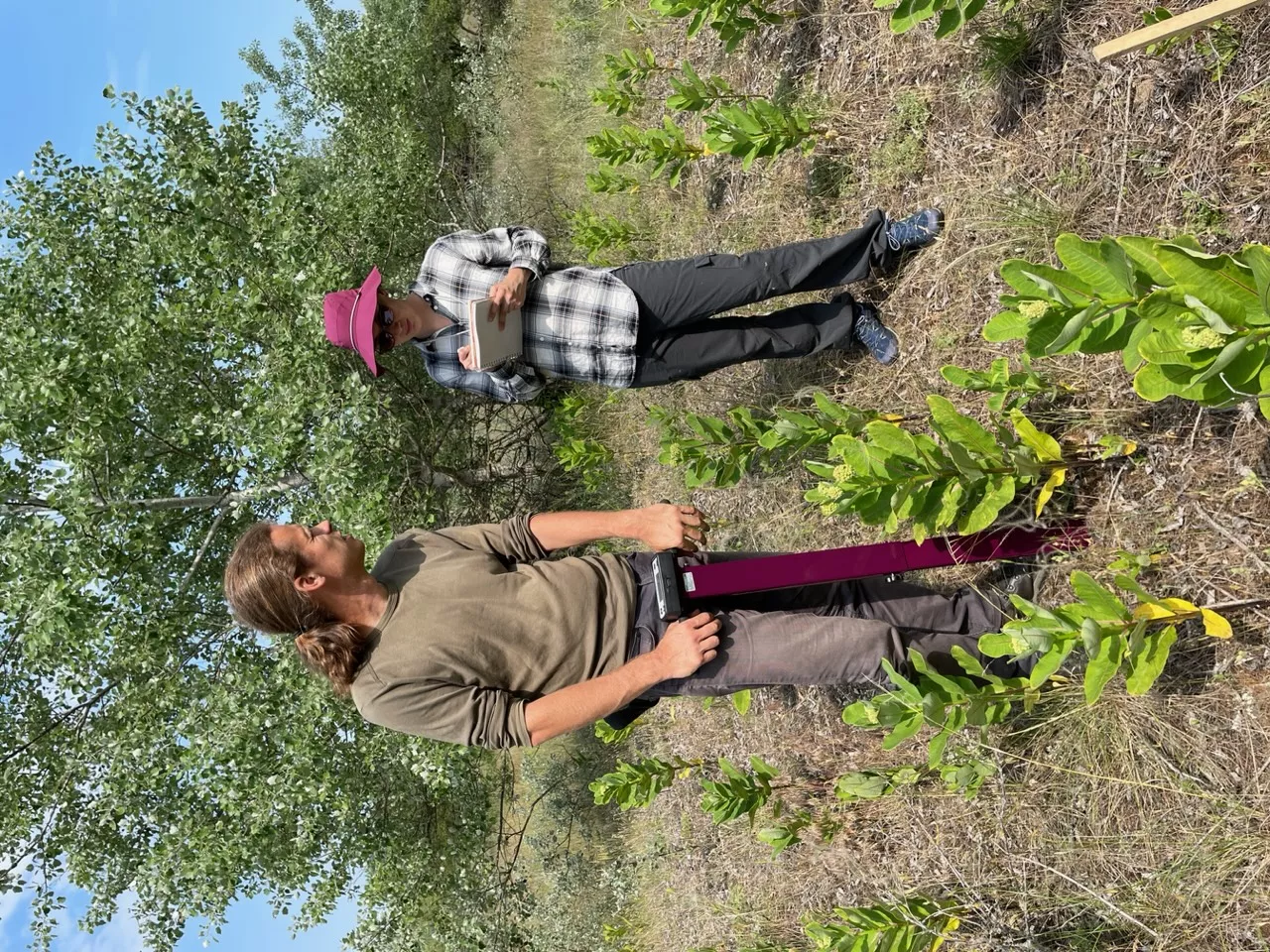A Hungarian research team, led by researchers from the HUN-REN Centre for Ecological Research (HUN-REN CER), found contrasting results by investigating the effects of grassland fragmentation and plant invasion on arthropods. The direct effects were positive both on plant diversity and, consequently, on different arthropods groups. Still, these favoured the generalist species and not the specialist ones, adapted to the harsh environment of the forest steppes. The findings were published in the international journal Science of the Total Environment.
Forest steppes are a mosaic of grasslands and forests in the transition of temperate forest and steppe biomes and occur from the Far East of Russia to the Carpathian Basin in the West, where Hungary lies. They represent high nature conservation value. Therefore, their different habitat types are listed in the EU Habitat Directive. However, most of them are threatened by land-use change. Most forest steppes habitats on sensitive sandy soil were converted to plantation forests by exotic pine, a legacy of World War I when Hungary lost two-thirds of its territory along with the mountain areas with spruce important for timber production.

Milkweed height survey in front of exotic pine plantation (Péter Batáry)
Besides the detrimental effect of fragmentation, plant invasion threatens these less productive yet valuable natural forest steppes. Milkweed, a well-known food plant of the charismatic monarch butterfly in North America, is becoming increasingly widespread in these habitats, which were introduced for honey-making in the previous two centuries. Although milkweed most often does not fully cover the invaded areas, the well-visible flowering stems emerge markedly from the sparsely vegetated grassland part of the steppes. The researchers supposed and also were able to prove that milkweed changes the microclimate, which was drier in the invaded areas than in the control ones in the same study fragments, which described a size gradient from 0.2 to 8.7 ha. This size gradient rarely affected the different arthropod groups (bees, butterflies, flower-visiting wasps, flies, true bugs, and spiders); only spider species richness was negatively affected.

Soil moisture survey (Tamás Lakatos)
Nevertheless, the researchers also showed that milkweed can provide shade with cooler microclimates, thereby supporting plant species richness. Of course, pollinating insect species richness profited from increased native plants and milkweed abundance. Also, herbivores, such as true bugs, and predators, such as spiders, showed increased species richness for elevated plant richness and the associated more complex vegetation structure. Although the latter group, namely the spiders, was indirectly negatively affected by decreasing soil moisture.

Pollinator survey in the forest-steppe with natural woodlot in the back (Tamás Lakatos)
In general, all these would suggest that milkweed is not so harmful. However, when the researchers classified the study species into habitat generalists and specialists, they found that the above misrepresentation of positive results is due to the generalists, which profited from the invasion, whereas specialists were not directly affected. Thus, in the long term, the continued invasion would irreversibly change the habitats dominated by generalist arthropods, displacing the valuable specialist ones – explains Péter Batáry, an author of the study. Therefore – recommends Róbert Gallé, the first author of the study – besides stopping the fragmentation and carefully maintaining the sensitive habitats, eliminating invasive plants from small habitat fragments is key to preserve the native biota.
Publication:
Gallé, R., Tölgyesi, C., Szabó, Á.R., Korányi, D., Bátori, Z., Hábenczyus, A., Török, E., Révész, K., Torma, A., Gallé-Szpisjak, N., Lakatos, T. & Batáry, P. (2023). Plant invasion and fragmentation indirectly and contrastingly affect native plants and grassland arthropods. Science of the Total Environment in press. DOI: 10.1016/j.scitotenv.2023.166199